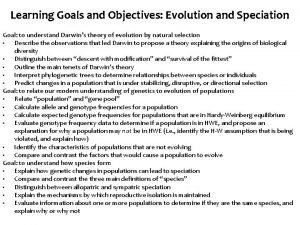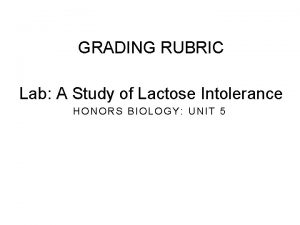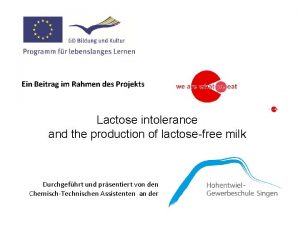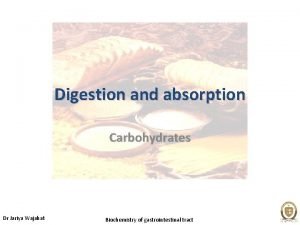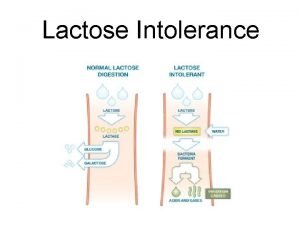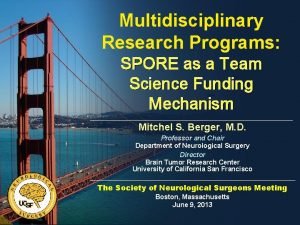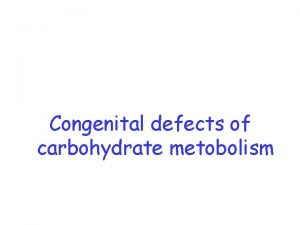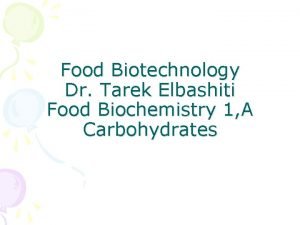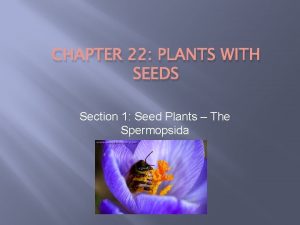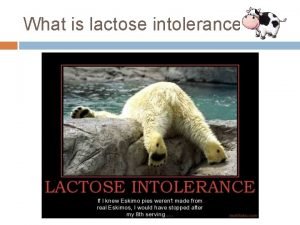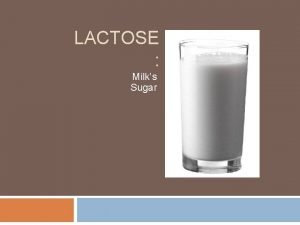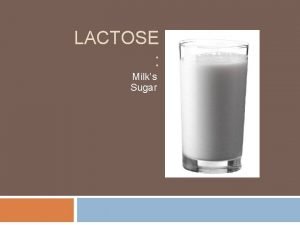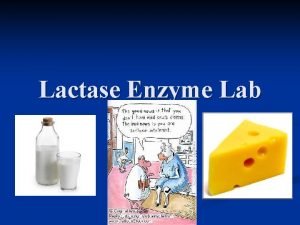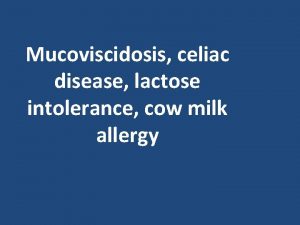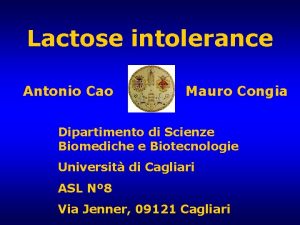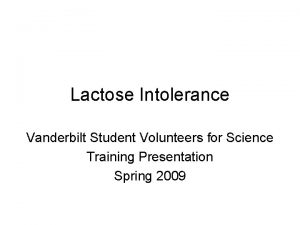Genetics of lactose intolerance Pivi Onkamo adapted from













- Slides: 13

Genetics of lactose intolerance Päivi Onkamo adapted from materials by Heli Rasinperä & Kaija-Leena Kolho, from Department of Medical Genetics, University of Helsinki, Helsinki and Lasten ja Nuorten sairaala, HUS

Lactose intolerance Adult-type hypolactasia Lactose -During the childhood, lactase activity declines to 10 -15% of that in early childhood - > 50% of world population lactose intolerantics (18% of Finnish population) Lactase -Recessive inheritance (Sahi, 1974) Glucose Galactose

Lactase expression during different phases of development

Lactose intolerance: phenotype and symptoms l l l The most typical enzyme deficiency in human populations Small intestine Causes typical symptoms of the deficiency, the lactose intolerance Mainly diagnosed during childhood / early adulthood Water Lactose Bacterial fermentation Lactic acid Acetic acid Large intestine Water Diarrhea Flatulence

Lactose intolerance in different populations Population Prevalence Finnish 18% Lapp 34 - 60% Swedish-speaking Finnish 8% Swedish 1% (9%) Danish 2% French 32 - 44% Italian 50 - 72% USA (Caucasian) 22% USA (African-American) 65% African (South of Sahara) 75 - 100% Thai 97 - 100%

Why population differences? l l Milk from domestic cows has been a valuable food source for over 8, 000 years, especially in lactose-tolerant human societies that exploit dairy breeds Study of milk protein genetic diversity of domestic cattle and lactase persistence in humans showed highly concordant geographical distribution, indicating Gene-culture coevolution driven by the advantages conferred by milk consumption: The North-Central European population in neolithic times has been greatly dependent on milk, and thus the selection pressure for lactase persistence has been strong Beja-Pereira et al: Gene-culture coevolution between cattle milk protein genes and human lactase genes. Nat Genet 2003

Refinement of the adult-type hypolactasia locus RP 11 -329 I 10 NH 0034 L 23 NH 0318 L 13 D 2 S 3011 D 2 S 3015 D 2 S 3012 D 2 S 3013 LPH D 2 S 3017 D 2 S 3014 D 2 S 3016 MCM 6 (LPH=Lactase phlorizin hydrolase) D 2 S 3018 DARS Adult-type hypolactasia locus C/T-13910 G/A-22018 MCM 6 exons D 2 S 3013 0 k 10 k 20 k 30 k 40 k D 2 S 3014 50 k Enattah NS, Sahi T, Savilahti E, Terwilliger JD, Peltonen L, Järvelä I: Identification of a variant associated with adult-type hypolactasia. Nature Genetics 2002; 30: 233 -7.

DNA variant C/T-13910 was found to be highly associated with lactase non-persistence:

l Next, lactase m. RNA was quantified in intestinal biopsy samples from 142 children with different genotypes regarding the SNP variant C/T-13910 Genotype Number of persons Lactase activity U/g protein (average) T/T 39 50. 0 C/T 86 29. 9 C/C 17 6. 5

Expression of the C/T-13910 genotypes l l l Heterozygotic genotype C/T had statistically significant difference in the amount of expressed LPH m. RNA =>DNA variant C/T-13910 roughly 14 kb upstream from the LCT locus participates in regulation of lactase production in the level of transcription Lately, it has been shown that the expression of Callele in C/T heterozygotes starts to decline in children >6 years of age, while the expression of T-allele persists (Rasinperä et al, A genetic test which can be used to diagnose adult-type hypolactasia in children. Gut 2004; 53: 1571– 1576)

Functional studies T-allele increases the promoter activity 4 x compared to allele C Olds L et al, Hum Mol Genet 2003, 12: 2333 -40 Troelsen J et al, Gastroenterology 2003; 125: 1686 -94 Figure from Troelsen J, et al.

The genetic testing of C/T-13910 has rapidly gained footsite in diagnostics of abdominal problems. The previously predominated methods have been - only 80% reliable - tedious and expensive (when compared to a gene test) - false positive results in children even 30%

 Lactose intolerance gene
Lactose intolerance gene Lactose intolerance countries
Lactose intolerance countries Enzymes and lactose intolerance lab answers
Enzymes and lactose intolerance lab answers Lactose intolerance
Lactose intolerance Hoch₂
Hoch₂ Lactose intolerance histology
Lactose intolerance histology What is the cause of lactose intolerance
What is the cause of lactose intolerance Spore pivi
Spore pivi Intolerance theme in the crucible
Intolerance theme in the crucible Galactosemia
Galactosemia Stibio-intolérance définition
Stibio-intolérance définition Mary warren quotes
Mary warren quotes Maltose intolerance
Maltose intolerance What is spermopsida
What is spermopsida
